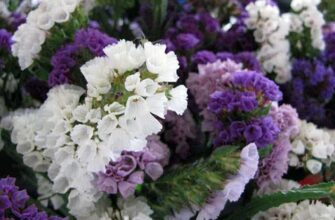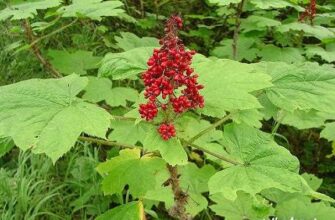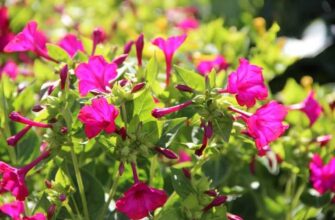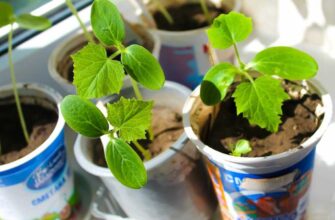- Что такое органические удобрения?
- Какие виды органических удобрений существуют?
- 1. Компост:
- 2. Гумус:
- 3. Жидкое удобрение:
- Компост и перегной
- Компост
- Перегной
- Зеленое удобрение
- Животный навоз
- Преимущества использования органических удобрений
- 1. Естественное питание почвы
- 2. Улучшение структуры почвы
- 3. Защита от вредителей и болезней
- 4. Экологическая безопасность
- Как правильно применять органические удобрения?
- 1. Выбор органических удобрений
- 2. Правильное применение удобрений
- Расчет дозы и частоты применения
- Правила хранения и использования органических удобрений
- Хранение
- Использование
- Учет особенностей растений
- Вопрос-ответ:
- Какие есть типы органических удобрений?
- Что такое перегноевые удобрения?
- Как использовать органические удобрения в саду или огороде?
- Какую роль играют органические удобрения в устойчивом сельском хозяйстве?
Органические удобрения — это природные вещества, которые используются для повышения плодородия почвы и улучшения роста растений. Они получаются из органических материалов, таких как компост, навоз, остатки растений, водоросли и другие.
Использование органических удобрений является более экологически безопасным и устойчивым подходом к сельскому хозяйству. Они способствуют обогащению почвы не только необходимыми питательными веществами, но и важными микроорганизмами, которые улучшают ее структуру и активность.
Одним из главных преимуществ органических удобрений является их длительное действие. Они постепенно высвобождают питательные вещества, обеспечивая постоянное питание растений на протяжении длительного времени. Кроме того, органические удобрения улучшают водоудерживающие свойства почвы и способствуют снижению риска эрозии.
Использование органических удобрений помогает сохранить естественное равновесие в почве и сделать сельское хозяйство более устойчивым и экологически безопасным.
Органические удобрения могут быть использованы как в промышленном сельском хозяйстве, так и в садоводстве и огородничестве. Они являются важной частью органического земледелия, которое все более распространяется во всем мире. Забота о почве и ее плодородии является ключевым фактором для увеличения урожайности и сохранения окружающей среды для будущих поколений.
Что такое органические удобрения?

Органические удобрения – это природные или животные вещества, которые применяются для улучшения урожайности почвы и питания растений. Они содержат органические вещества, такие как животные отходы, растительные остатки, компосты и другие биологически разлагаемые материалы. Органические удобрения позитивно влияют на качество почвы, обеспечивают ее удобопроходимость, стимулируют рост растений и улучшают их иммунитет.
Одним из главных преимуществ органических удобрений является их экологическая безопасность. Они не содержат синтетических химических добавок, которые могут нанести вред окружающей среде и здоровью людей. Органические удобрения также способствуют сохранению биологического разнообразия и поддержанию естественного баланса в почве.
Применение органических удобрений позволяет улучшить структуру почвы, повысить ее плодородие и увеличить устойчивость растений к болезням и вредителям. Они содержат не только основные питательные элементы, такие как азот, фосфор и калий, но и микроэлементы, необходимые для нормального развития и роста растений. Органические удобрения способствуют также активации деятельности почвенных микроорганизмов, которые разлагают органические вещества и обеспечивают поступление питательных веществ в растения.
Какие виды органических удобрений существуют?

Органические удобрения являются естественным и экологически безопасным способом повышения плодородия почвы. Они обладают рядом преимуществ перед химическими удобрениями, такими как низкая стоимость, улучшение текстуры почвы, сохранение воды и укрепление здоровья растений. Существует несколько видов органических удобрений, каждое из которых имеет свои особенности и применение.
1. Компост:
Компост — это органическое удобрение, получаемое путем разложения органической материи, такой как пищевые отходы, листья, кормовая ботва и т.д. Компост является богатым источником питательных веществ, таких как азот, фосфор и калий, которые необходимы для роста растений. Компост также улучшает структуру почвы и способствует удержанию влаги.
2. Гумус:

Гумус — это гниющая органическая материя, образующаяся в результате разложения растительных остатков под воздействием микроорганизмов. Гумус содержит множество полезных элементов, таких как нитратный азот, фосфор, калий, магний и микроэлементы. Он способствует увеличению плодородия почвы, улучшает плодовитость, а также обладает водоудерживающими свойствами, что особенно важно в периоды засухи.
3. Жидкое удобрение:
Жидкое органическое удобрение представляет собой раствор воды с высоким содержанием питательных веществ. К примеру, жидкое удобрение из сорняков или растителей содержит множество полезных микроэлементов, таких как железо, медь, марганец и цинк. Жидкое удобрение легко усваивается растениями и позволяет быстро обеспечить им нужные питательные вещества.
Выбор органического удобрения зависит от типа почвы, условий выращивания растений и вида культуры. Важно правильно подобрать удобрение и следовать инструкциям по его применению, чтобы достичь наилучших результатов в повышении плодородия почвы и урожайности растений.
Компост и перегной
Компост и перегной — это органические удобрения, получаемые из разложения органических материалов.
Компост
Компост — это продукт, получаемый путем естественного разложения органических отходов под действием микроорганизмов и активной аэрации. В процессе компостирования органический материал превращается в плодородную почву, богатую питательными веществами и микроорганизмами. Компост можно использовать для улучшения структуры почвы, удержания влаги и обеспечения растений необходимыми питательными веществами.
В процессе компостирования важно соблюдать определенные условия, такие как правильное соотношение зеленых и коричневых материалов, поддержание влажности и достаточной аэрации.
Перегной
Перегной — это еще более высококачественное органическое удобрение, получаемое путем разложения органического материала с участием животных. В процессе перегнивания органический материал проходит через пищеварительную систему животных, что позволяет более глубоко и полноценно разложить его.
Перегной обладает высокой питательной ценностью и обогащает почву макро- и микроэлементами. Он способствует укреплению корневой системы растений, повышает ее устойчивость к болезням и вредителям, а также улучшает структуру и водоудерживающую способность почвы. Перегной может быть использован как внесение в почву, так и в качестве компонента для приготовления плодородных субстратов для растений.
Использование компоста и перегнойя помогает улучшить качество почвы, повысить ее плодородие и урожайность растений, а также снизить потребность в химических удобрениях. Органические удобрения являются экологически чистыми и безопасными для окружающей среды.
Зеленое удобрение
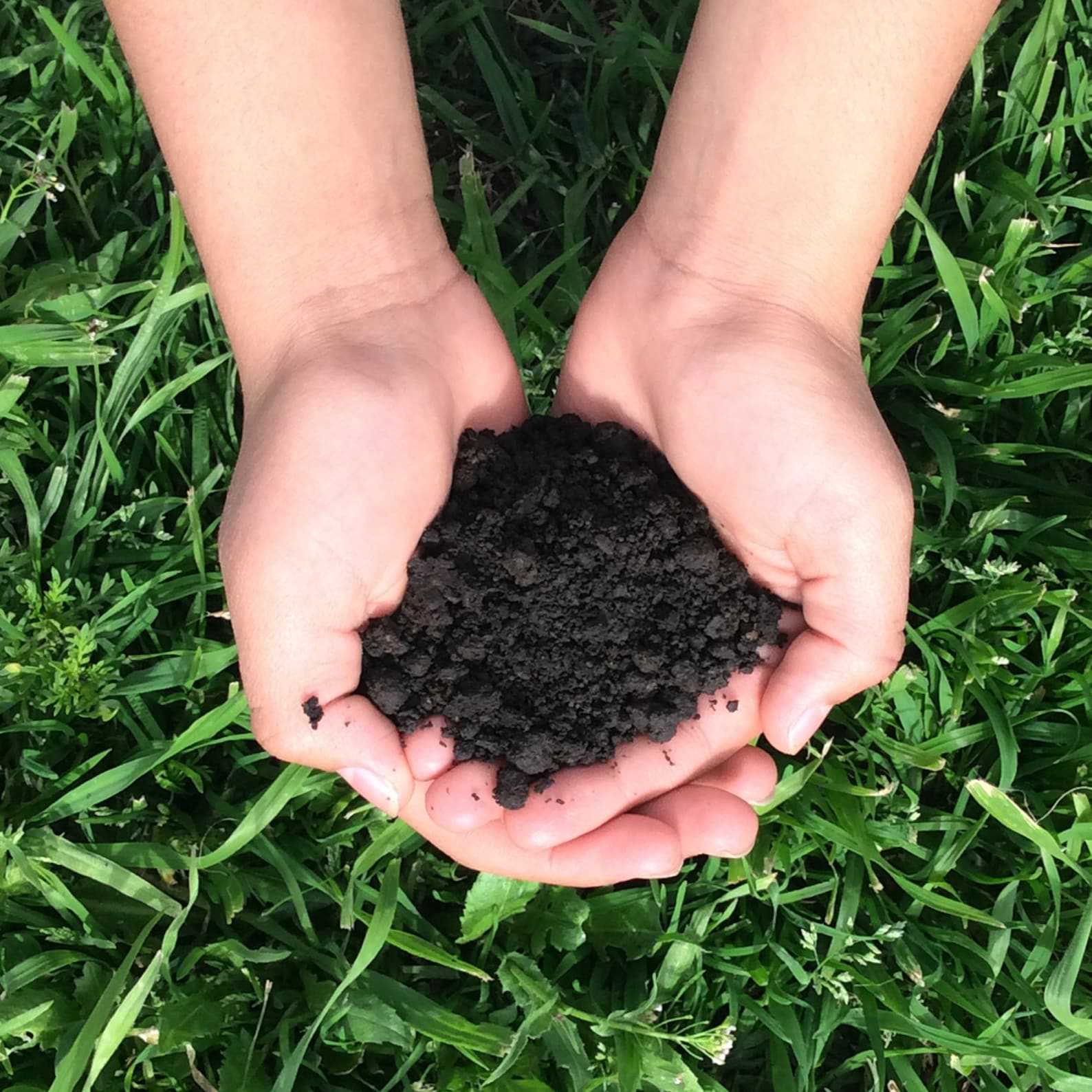
Зеленое удобрение – это прием обогащения почвы органическими веществами и микроэлементами путем посева и последующего использования зеленых растений. Оно используется для повышения плодородия почвы, улучшения ее структуры и удержания питательных веществ.
Одним из самых распространенных зеленых удобрений является клевер. Он обладает способностью связывать азот из воздуха и помогает его фиксации в почве. Также клевер положительно влияет на структуру почвы и способствует обогащению ее органическими веществами.
Другим популярным зеленым удобрением является горчица. Горчица быстро растет и имеет глубокий корень, который разрушает плотные почвенные слои. Кроме того, горчица содержит множество микроэлементов, которые затем передаются в почву и обогащают ее.
Зеленое удобрение эффективно при использовании в системе севооборота. После сбора урожая основного культуры, зеленое удобрение может быть посеяно на грядки или поля. Когда зеленые растения достигают определенной зрелости, их обрезка и вкопка в почву способствуют ее обогащению и подготовке к следующей посадке.
Животный навоз
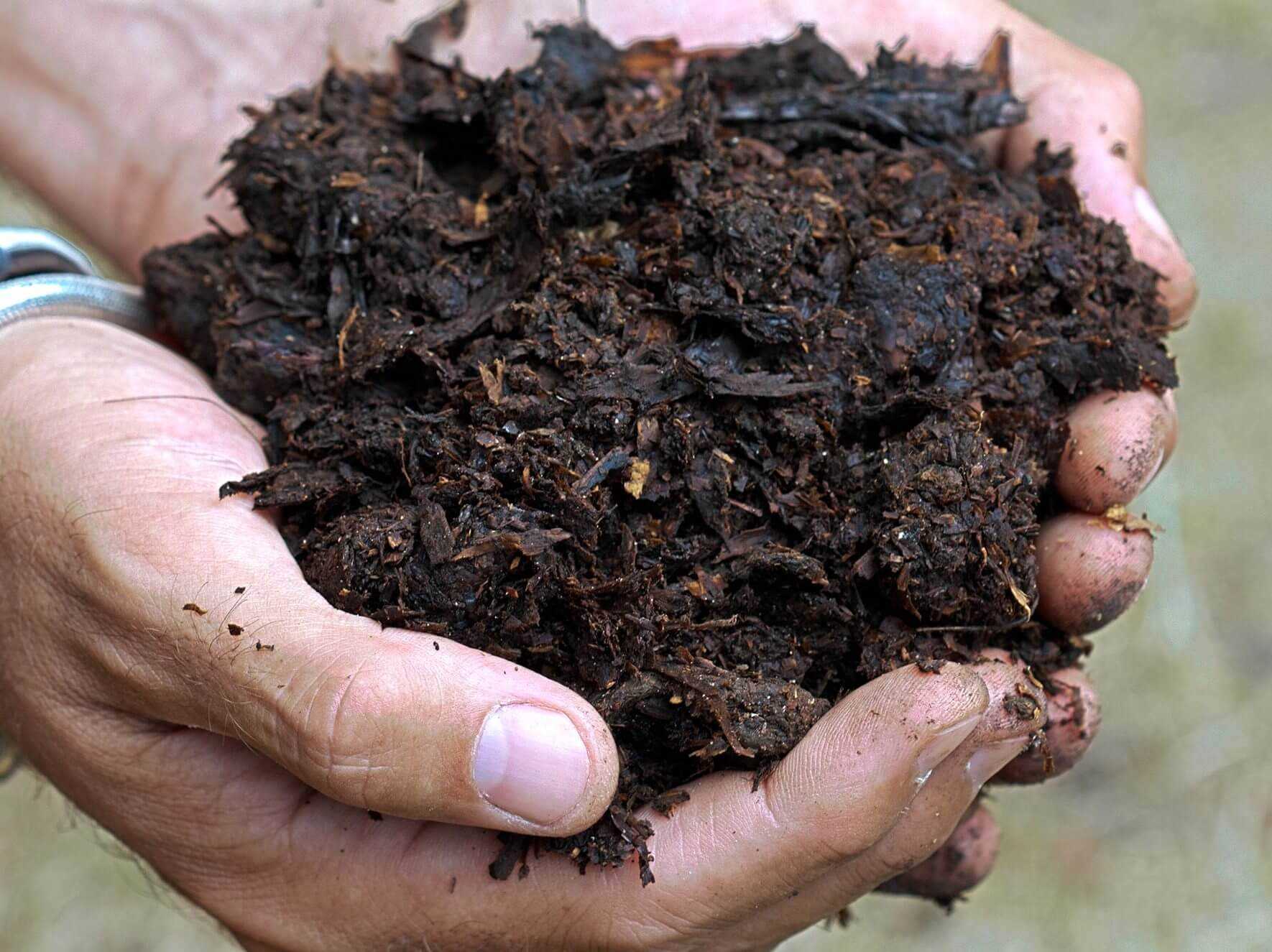
Животный навоз является одним из самых популярных органических удобрений, которое используется для улучшения плодородия почвы. Он получается в результате переработки отходов животного происхождения, таких как навоз, моча и перья.
Одним из главных преимуществ животного навоза является его высокое содержание питательных веществ, таких как азот, фосфор и калий. Эти элементы являются основными для здорового роста растений и развития корневой системы.
Помимо питательных веществ, животный навоз также содержит органический материал, который улучшает структуру почвы, способствует её воздухопроницаемости и удержанию влаги. Это важно для обеспечения оптимальных условий для корневой системы растений.
Животный навоз может использоваться как внесение удобрений перед посевом или посадкой растений, так и как прикорневое удобрение. В первом случае, навоз вносится в почву задолго до посева или посадки, чтобы дать ему время разложиться и стать доступным для растений. Во втором случае, навоз распределяется вокруг корневой системы растения, чтобы обеспечить его быстрый доступ к питательным веществам.
Важно отметить, что использование животного навоза требует правильной обработки и обращения с ним. Некорректное использование может привести к загрязнению окружающей среды и распространению патогенных микроорганизмов. Поэтому необходимо соблюдать определенные меры предосторожности при работе с животным навозом и следовать рекомендациям по его использованию.
Так стоп!!! Вы всё ещё не подписаны на наши каналы в Телеграмм и Дзен? Посмотрите: ТГ - (@historyfantasydetectivechat) и Дзен (https://dzen.ru/myshortsstorys)
Преимущества использования органических удобрений
Органические удобрения являются большим преимуществом для земледелия и сельского хозяйства по нескольким причинам.
1. Естественное питание почвы
Органические удобрения содержат органические вещества, которые питают почву и обеспечивают достаточное количество питательных веществ для роста растений. Это позволяет сохранить естественное баланс питания почвы и обеспечить высокие урожаи без использования химических добавок.
2. Улучшение структуры почвы

Органические удобрения помогают улучшить структуру почвы путем увеличения ее плодородности и водоемкости. Они способствуют образованию грунтовых агрегатов, которые удерживают влагу в почве и обеспечивают лучший доступ кислорода и питательных веществ к корням растений.
3. Защита от вредителей и болезней
Органические удобрения способствуют укреплению иммунной системы растений, делая их более устойчивыми к вредителям и болезням. Они также создают благоприятную среду для полезных микроорганизмов, которые борются с вредителями и способствуют здоровому росту растений.
4. Экологическая безопасность
Органические удобрения не содержат химических веществ и пестицидов, которые могут негативно влиять на окружающую среду и здоровье людей. Они являются экологически безопасным вариантом удобрений, который помогает сохранить биоразнообразие и природные экосистемы.
В итоге, использование органических удобрений является оптимальным решением для поддержания плодородия почвы и здоровья растений, а также ведения экологически устойчивого сельского хозяйства.
Как правильно применять органические удобрения?

Органические удобрения являются ценным средством для улучшения качества почвы и повышения урожайности растений. Они могут быть различного происхождения, такого как навоз, компост, перегной, органические отходы и другие элементы, которые обладают питательными свойствами.
Перед применением органических удобрений необходимо провести анализ почвы, чтобы определить ее состав и потребности в питательных элементах. Это поможет выбрать подходящие удобрения и определить необходимую их дозировку.
1. Выбор органических удобрений
При выборе органических удобрений необходимо учитывать их состав, который указан на упаковке. Оптимальное соотношение макро- и микроэлементов в удобрении поможет удовлетворить потребности растений и обеспечить их нормальный рост и развитие.
2. Правильное применение удобрений
Удобрения рекомендуется вносить на почву до посева или посадки растений. Если удобрение вносится после посева, следует осторожно его растереть по почве или ввести с небольшой глубиной. Это способствует равномерному распределению питательных элементов в почве и их доступности для растений.
Органические удобрения рекомендуется применять вместе с минеральными удобрениями, чтобы обеспечить оптимальное сочетание питательных веществ для растений. Важно следовать рекомендациям производителя и правильно дозировать удобрения в зависимости от типа почвы и требований культуры.
Правильное применение органических удобрений позволит улучшить качество почвы, сохранить плодородие и повысить урожайность растений. Органические удобрения также способствуют укреплению иммунной системы растений и предотвращению возникновения различных заболеваний.
Расчет дозы и частоты применения

Расчет дозы и частоты применения органических удобрений является важным этапом в процессе их использования. Нужно учитывать не только потребности культуры, но и особенности почвы, а также уже имеющийся в почве запас питательных веществ.
Доза применения органического удобрения определяется исходя из потребностей культуры в питательных веществах и содержания этих веществ в удобрении. Чаще всего дозу применения выражают в килограммах или тоннах на гектар. Для точного расчета дозы следует провести почвенный анализ и определить содержание основных макро- и микроэлементов в почве.
Частота применения органического удобрения зависит от типа удобрения и его скорости высвобождения питательных веществ. Некоторые органические удобрения, например, перегной, могут применяться однократно перед посевом или посадкой растений. Другие удобрения, такие как компост или органические удобрения на основе морской водоросли, могут применяться в несколько приемов в течение вегетационного периода растений.
Расчет оптимальной дозы и частоты применения органического удобрения проводится с учетом плана выращивания культур, а также уровня плодородия почвы и требований растений к питательным веществам. Необходимо учесть, что превышение дозы применения удобрения может привести к отрицательным последствиям, таким как перегрузка почвы питательными веществами и загрязнение окружающей среды.
Правила хранения и использования органических удобрений
Органические удобрения являются неотъемлемой частью современного сельского хозяйства. Правильное хранение и использование удобрений является важным этапом в процессе удобрения почвы.
Хранение

Органические удобрения должны храниться в специальных складских помещениях, защищенных от влаги и солнечного света. Удобрения следует хранить на отдельных полках или стеллажах, разделяя их по видам и типам. Это поможет избежать их скрещивания и сохранить их целостность.
Температура в помещении, где хранятся органические удобрения, должна быть постоянной и контролируемой, чтобы предотвратить перегрев или охлаждение удобрений. Так же важно следить за уровнем влажности, для чего можно использовать специальные индикаторы. Для защиты удобрений от внешних воздействий следует использовать упаковку, обеспечивающую плотное закрытие и герметичность.
Использование
Перед использованием органических удобрений необходимо провести анализ почвы, чтобы определить ее физико-химические свойства и количество подлежащих удобрений. Для внесения удобрений на почву есть несколько способов: ручной и машинный. Выбор способа зависит от области применения и объема работ.
При использоании органических удобрений необходимо соблюдать определенные меры предосторожности. Необходимо использовать специальную защитную одежду, включая перчатки и маску, чтобы избежать попадания удобрений на кожу или дыхательных путей. Также важно соблюдать рекомендуемые дозы удобрений, чтобы избежать их избыточного применения, что может привести к негативным последствиям для почвы и растений.
Учет особенностей растений
При использовании органических удобрений важно учитывать особенности каждого конкретного растения. Разные виды растений имеют различные потребности в питательных веществах, поэтому необходимо подобрать удобрение, которое будет оптимально для данного вида.
Тип почвы также важно учитывать при выборе органического удобрения. Некоторые растения предпочитают кислую почву, в то время как другие предпочитают щелочную. Поэтому необходимо знать кислотно-щелочной баланс почвы и подобрать удобрение, которое поможет поддерживать оптимальный уровень pH в почве.
Органические удобрения также могут быть разными по составу и консистенции. Например, компост обогащает почву гумусом, что способствует более успешному росту растений. Также существуют органические удобрения на основе животных отходов, которые содержат большое количество азота, фосфора и калия, необходимых для развития растений.
Кроме выбора правильного органического удобрения, также необходимо учитывать периоды внесения удобрений. Разные растения нуждаются в разном количестве питательных веществ на разных стадиях своего развития. Например, на начальном этапе роста растения требуют больше азота, а на этапе цветения — больше фосфора и калия.
Вопрос-ответ:
Какие есть типы органических удобрений?
Существует несколько типов органических удобрений, включая перегноевые, компостные, зеленые удобрения, органоминеральные и биологические.
Что такое перегноевые удобрения?
Перегноевые удобрения являются продуктом разложения органических веществ животного происхождения, таких как навоз, гнилой компост и перегной. Они богаты макро- и микроэлементами, а также содержат множество полезных микроорганизмов.
Как использовать органические удобрения в саду или огороде?
Органические удобрения можно использовать как основное питание для растений, внося их в почву перед посевом или посадкой. Также их можно применять в виде поверхностного подкорма, разбрасывая рядом с растениями или внесением их в воду для полива. Важно следить за дозировкой и рекомендуемыми сроками применения.
Какую роль играют органические удобрения в устойчивом сельском хозяйстве?
Органические удобрения играют важную роль в устойчивом сельском хозяйстве. Они помогают сохранить плодородие почвы, улучшить ее структуру и растительное питание. Они также способствуют сохранению биологического разнообразия в почве и уменьшают риск загрязнения грунтовых вод и окружающей среды химическими удобрениями. Кроме того, органические удобрения могут быть произведены на месте, что снижает потребность в их транспортировке и экономит энергию.



